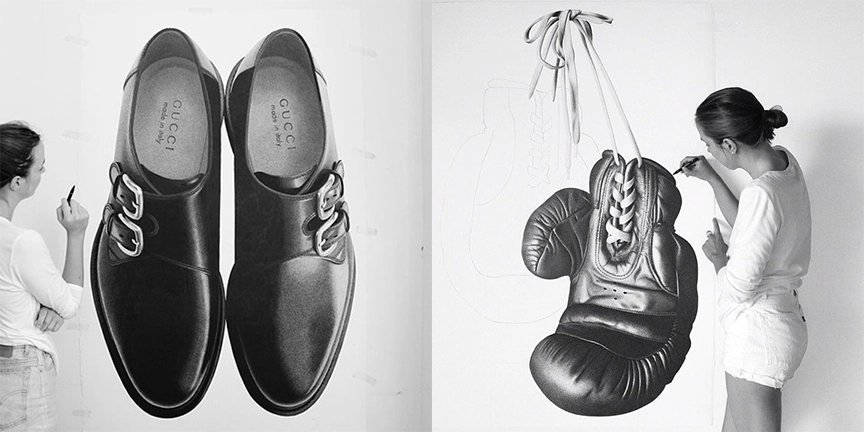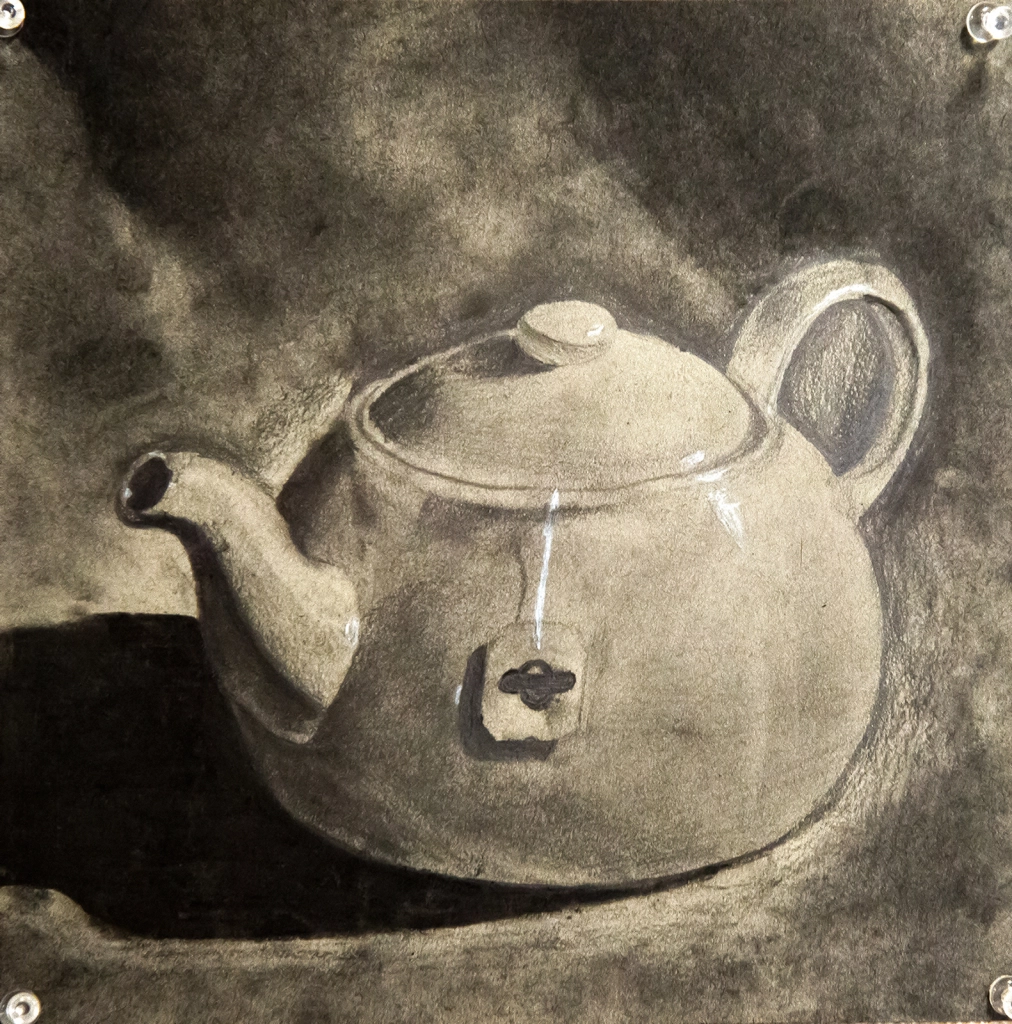Description of the Unit –
We begin by diving into the fascinating art of CJ Hendry. Hendry expresses having no formal art training and considers herself “not very creative.” Yet she’s a dedicated, innovative artist whose works are primarily hyper-realistic, large scale pencil drawings of (mostly) luxury objects that sometimes take 200 hours to complete. Working with pencil on paper her pieces are achieved through layers of what she refers to as scribbles. Watching her work (you can see some fun videos of her at work here: https://youtu.be/KB8vc9M4QWs and https://youtu.be/KixMpzhMS-o) students become awe-struck by the way her tireless pencil strokes become such lifelike, more-than-photographic representations of real-life objects. They wonder aloud how she does it, exclaiming that they would love to draw like Hendry. I tell them that this unit will give them a foundation for getting there.

Students will learn to recognize how light and shadow in a realistic drawing can be expressed through a value scale. I give students a value scale and have them look at different black and white photographs while identifying which tones from the value scale are represent in each photo.

To help deepen their understanding of value students practice filling in their own scale in pencil.

They then choose from among several different black and white still life photographs to use as reference for their own chiaroscuro still life. A chiaroscuro drawing is made on medium-toned paper using both dark and light (usually white) lines to create the illusion of three dimensions.
During pandemic’s shelter-in-place period I created a video tutorial for practicing these same techniques using a portrait instead of a still life.
Activity statement –
Learning to draw three-dimensional objects, paying attention to light, shadow, value, tone and perspective, are fundamental lessons of art. In this unit students will learn what a value scale is and how that is used to express the three-dimensional qualities of light and shadow in a chiaroscuro drawing. They will fill in their own value scale before beginning a chiaroscuro still life (from a photo reference) so as to fully understand the subtle shift in tones from light to dark.
Goals – Students should…
Understand:
- The element of value in art
- The term chiaroscuro
- How a value scale works
Know:
- What a value scale is
- What each of the following types of shadows mean: form, core, occlusion and cast shadow
Be able to:
- Create a value scale
- Be able to express light, shadow and value in a monochrome drawing
Objectives – Students will:
- Observe value as expressed in drawing
- Create a value scale
- Render one monochrome still life in graphite and charcoal via a photographic reference
Resources and materials –
- (If you want to include CJ Hendry’s work) Examples and videos of CJ Hendry’s work
- Exemplars of still life in charcoal and graphite that students can observe
- Value scale worksheet
- Gray scale value finder for each student
- Black and white still life photo references
- White Bristol paper (9 x 11)
- Black Bristol paper (9 x 11)
- Graphite drawing pencils in diverse tones (HB, 3B, 5B, 6B, 9B)
- White drawing pencils
- Charcoal
- Blending stomps
- Paper towels
- Rulers
Questions –
- Can you count the number of different grays in (given) image? Why are there so many?
- Point to the form shadows in the image.
- Point to the cast shadows.
- Where do you see the brightest white? Why is it there?
- Where do you see the blackest black? Why is it there?
- How can you convey the appearance of light and shadow in drawing?
- How can you convey perspective in drawing?
Evaluation – Did students:
- Understand the difference between form and cast shadow?
- Notice the variety of grays one can use in chiaroscuro drawing?
- Attempt to render value and perspective in their drawings?
Informal:
- Student questions
- Group discussions
- Oral responses to essential questions
- One finished value scale
- One finished drawing







